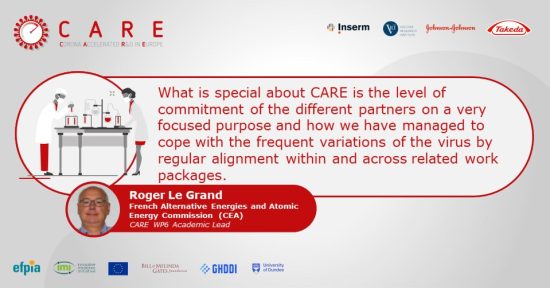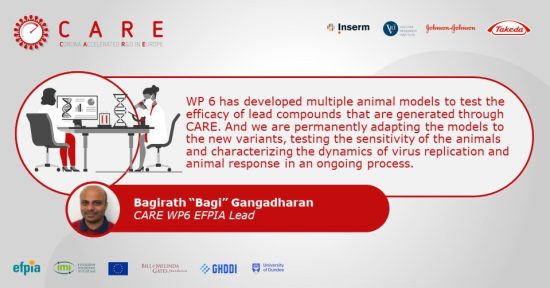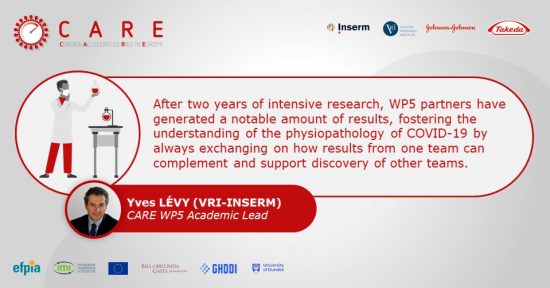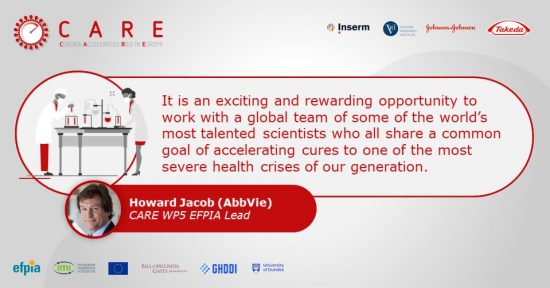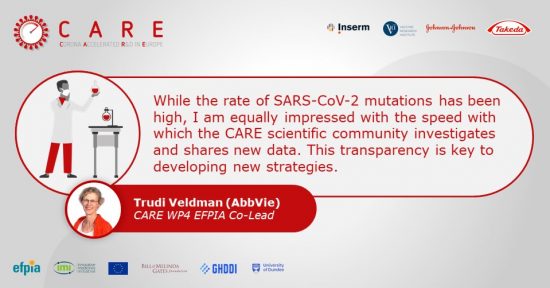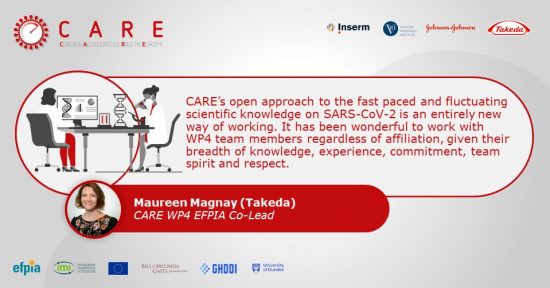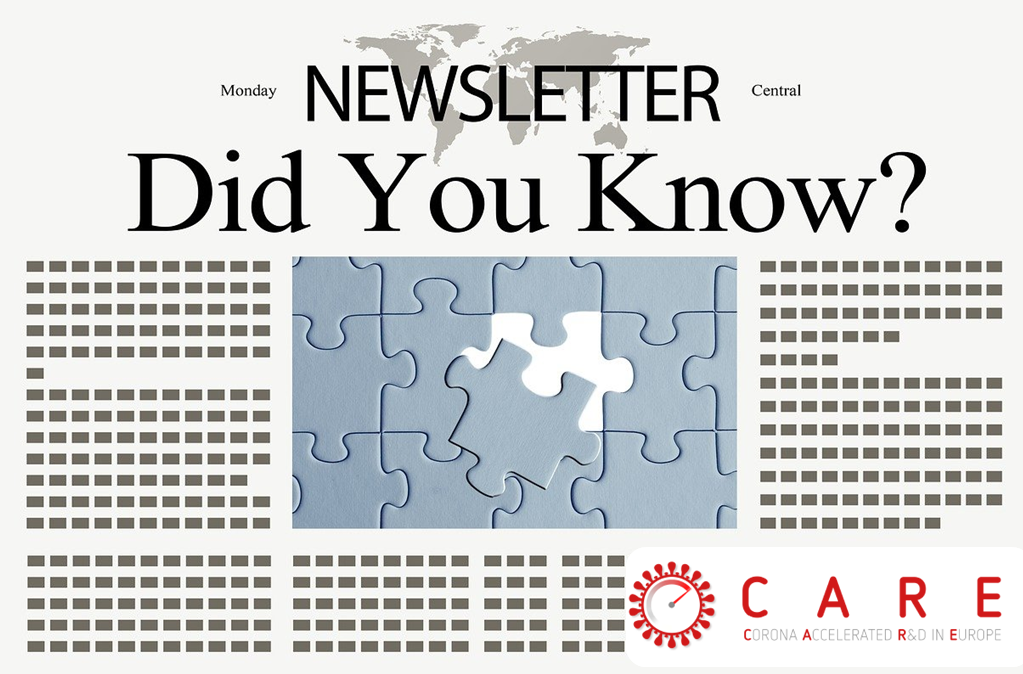Possible collaboration with IMI CARE for late phase development of SARS-CoV-2/pan coronavirus antivirals and antibodies.
Have you developed a SARS-CoV-2 or potential broad-spectrum compound (small molecule or antibody) and need support with its characterisation, pre-clinical and/or early clinical testing? The CARE project has developed three platforms open to external collaboration to prepare the next generation of SARS-CoV-2/pan coronavirus antivirals/antibodies: an in vitro profiling platform, a pre-clinical in vivo platform and a clinical trial platform.
The CARE project is looking for promising SARS-CoV-2 and/or pan coronavirus antiviral compounds (small molecules and antibodies) to include in its pipeline. Although CARE is particularly interested in clinic ready assets, the project can also provide support for pre-clinical phase of development. CARE can help you with the development of your compound(s) by providing:
- A clinical trial platform of five centres in Europe with experience in clinical trials in infectious disease. The CARE project focuses on phase 1 and phase 2a trials
- Pre-clinical in vivo characterisation of small molecules and antibodies in hamster, mouse and non-human primate efficacy models against various SARS-CoV-2 variants.
- A well-developed platform of in vitro assays (viral yeld assays, time of addition assays, assays to interrogate mode of action, etc.) for profiling of compounds(*) in different cell lines (e.g. VeroE6, A549, ex vivo broncheal and nasal epithelial cells) against different SARS-CoV-2 variants as well as other coronaviruses.
- A platform for the assessment of the inhibitory properties of compounds (*) in target-based assays and the study of the interaction of compounds(*) with their target.
*Please note that compounds already screened via ISIDORe will not be accepted to avoid duplication of effort.
If you are interested, please contact us through the contact form: https://www.imi-care.eu/contact/
Download the call for collaboration here: Possible collaboration with IMI CARE for late phase development of SARS-CoV-2/pan coronavirus antivirals and antibodies.

